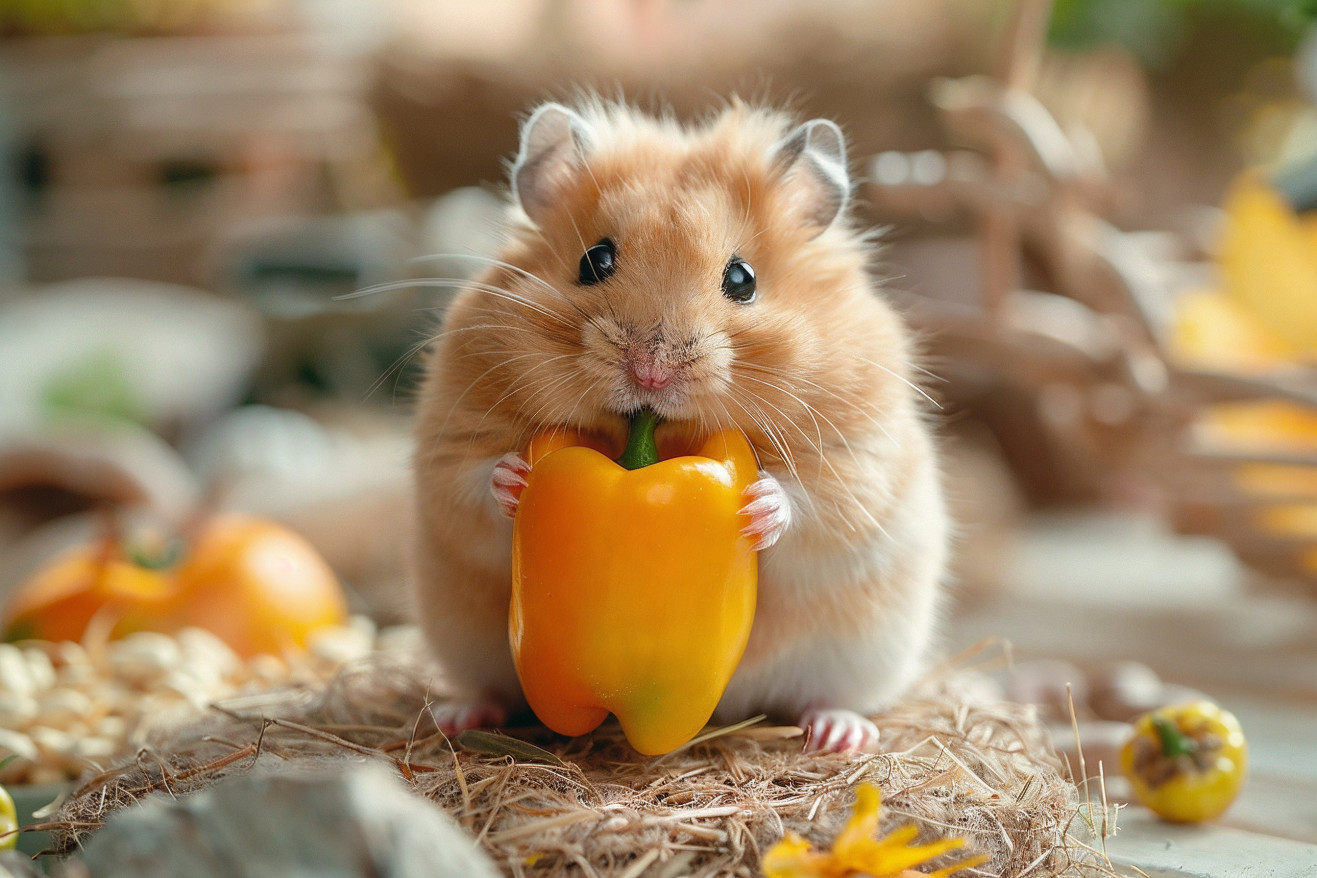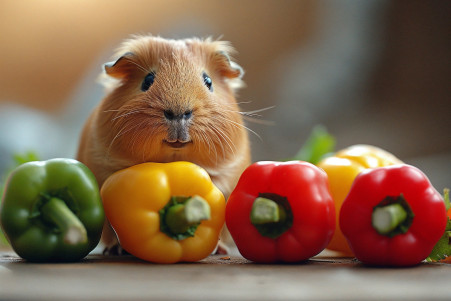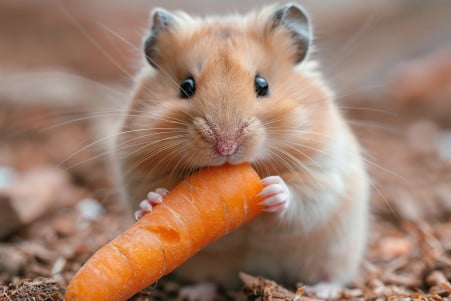Can Hamsters Eat Bell Peppers? A Vet Weighs In on the Best Veggies
16 May 2024 • Updated 15 May 2024

If you’ve ever wondered whether or not your hamster can enjoy the satisfying crunch of a bell pepper, you’re in luck. Bell peppers are a great source of vitamins and can be a healthy treat for your hamster as long as you don’t overdo it. That said, make sure you take out the seeds and don’t give them too much in one sitting, as the high water content can lead to diarrhea.
In this article, we’ll explore advice from veterinarians and other reputable sources to help you understand how to best add bell peppers and other fresh vegetables to your hamster’s diet. We’ll also cover how much of this food you should give your hamster, how to prepare it, and what to look for if you think your hamster may have had too much. This way, you can give your furry friend a treat that’s both delicious and nutritious while keeping them safe and healthy in the long run.
Can hamsters eat bell peppers?
Nutritional Information for Hamsters
Bell peppers are a great source of nutrition for our hamster pals. As Hepper explains, they are low in fat and high in fiber, making them a great option for a healthy snack. Their high vitamin C content, as pointed out by Bethanyhamilton on Medium, can help support a hamster's immune system and health in general.
In addition to vitamins, bell peppers are also a source of antioxidants, which can help protect against free radicals and diseases, per Hepper. They also have fiber, which can help with digestion and ensure that your hamster has regular bowel movements, which is important for their health. It's worth noting that while bell peppers are high in vitamin C, hamsters can actually make this vitamin themselves, as PetKeen points out. This means that you should only give your hamster bell peppers as a treat. You should not make them a regular part of their diet. However, if you do this, you can make sure that you're adding some extra nutrients to their diet without worrying about them eating too many.
How Much and How Often Should You Feed Bell Peppers to Your Hamster?
According to the Ontario Hamster Club, hamsters can have a small amount of bell pepper, about the size of their ear, as an occasional treat. Since introducing new foods can cause adverse reactions or digestive problems, the Ontario Hamster Club recommends introducing bell peppers slowly to see how your hamster reacts. Meanwhile, TnyPets suggests that you feed your hamster 1-2 small slices of bell pepper 2-3 times a week. Finally, Bethanyhamilton on Medium says that you can feed your hamster a small piece of bell pepper 2-3 times a week.
Feeding your hamster too much bell pepper can lead to diarrhea, dehydration, and weight gain because of its high water and sugar content, according to TnyPets. That's why it's important to make sure that bell peppers are only a small part of your hamster's diet, as the Ontario Hamster Club emphasizes.
How to Safely Prepare and Feed Your Hamster Bell Peppers
If you want to feed your hamster bell peppers, it is important to wash them thoroughly to remove any dirt, pesticide residue, or other contaminants, according to TnyPets. You should also remove the seeds and stem, which can be a choking hazard for hamsters.
TnyPets and the Ontario Hamster Club recommend cutting the bell pepper into small pieces that are easy for your hamster to eat and to avoid digestive upset. They also recommend introducing bell peppers slowly, starting with a small piece and watching for any negative reactions.
TnyPets also notes that it is important to make sure your hamster has access to water when you feed them bell peppers to help prevent dehydration and aid in digestion. By following these tips for safely preparing and feeding your hamster bell peppers, you can make sure they get the nutritional benefits of this food while minimizing any potential downsides.
More Vegetables That Hamsters Can Eat
In addition to bell peppers, there are many other fresh vegetables that can be part of a well-rounded diet for hamsters, according to PetMD. These options include carrots, cucumbers, broccoli, leafy greens, and a small amount of fruits, such as berries.
As The Spruce Pets notes, vegetables should be washed well and introduced one at a time so you can watch for any negative side effects. On the other hand, dried fruits and vegetables should be avoided because of their high sugar content, which can contribute to obesity and other health problems.
To make sure your hamster gets all the vitamins, minerals, and fiber they need, it's best to feed them a combination of fresh vegetables and a high-quality pelleted food, according to Jonkevin on Medium. This will help ensure your hamster's health and well-being.
How to Tell If Your Hamster Is Overfed and What Are the Potential Risks
It is important to look for signs of overfeeding to make sure that your hamster is healthy and happy. According to Hepper, some signs of overfeeding include diarrhea, dehydration, lethargy, and weight gain. Pet Keen also notes that overeating bell peppers or other watery foods can lead to digestive problems and nutritional imbalances.
While allergic reactions are unlikely, they can happen and may include skin problems, difficulty breathing, or lethargy, according to Hepper. If you notice any of these signs, make sure to contact your vet right away and make changes to your hamster’s diet, according to TnyPets.
Conclusion: Everything in Moderation and a Little Bit of Balance for the Healthiest Hamster
When given in moderation and introduced properly, bell peppers can be a nutritious and healthy addition to a hamster's diet. They offer a range of vitamins, minerals, and fiber that can help support a hamster's health. Still, it's important to make sure you're following the right serving sizes, keeping an eye on how much your hamster is eating, and slowly introducing bell peppers.
A balanced diet that includes a high-quality pelleted food is also important for hamster health. If you're introducing a new food, it's always best to check in with a vet and make sure you're watching for any signs of an allergic reaction.


